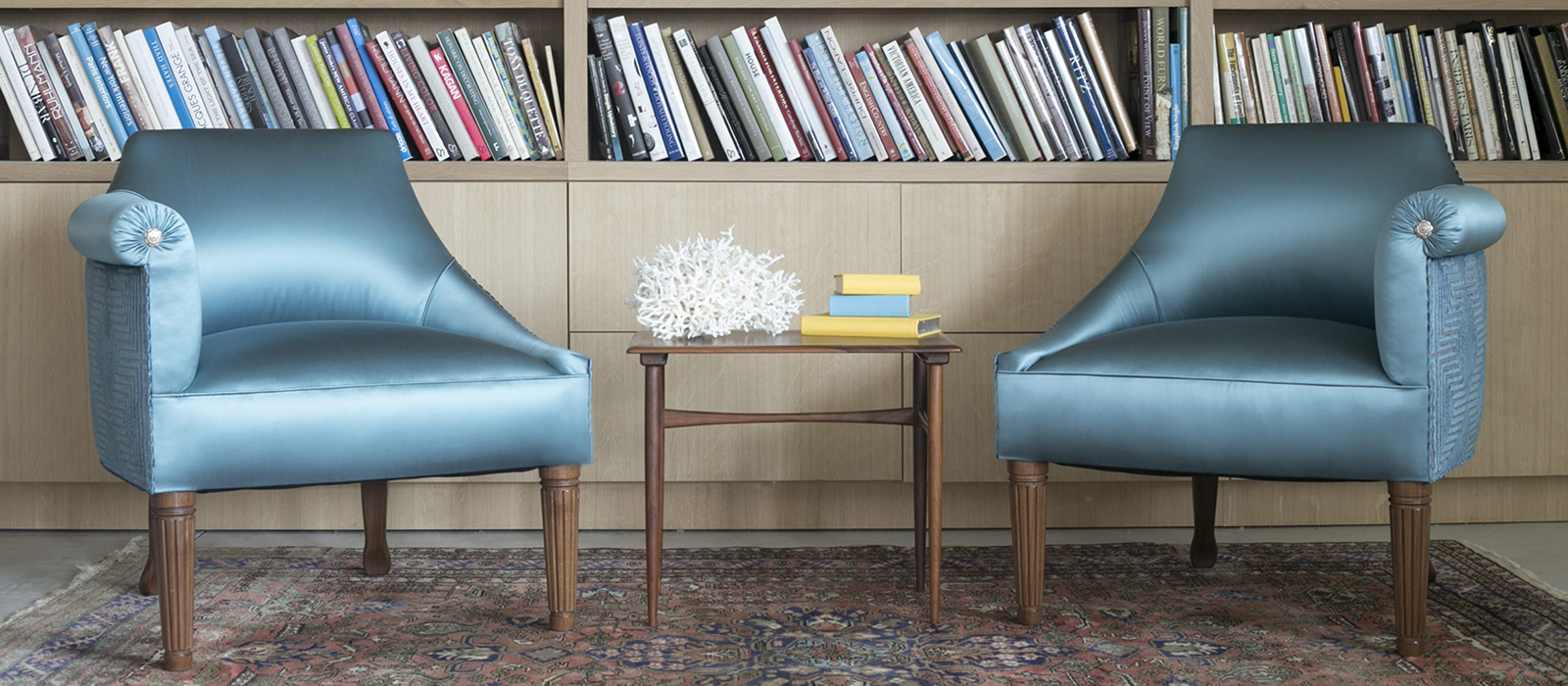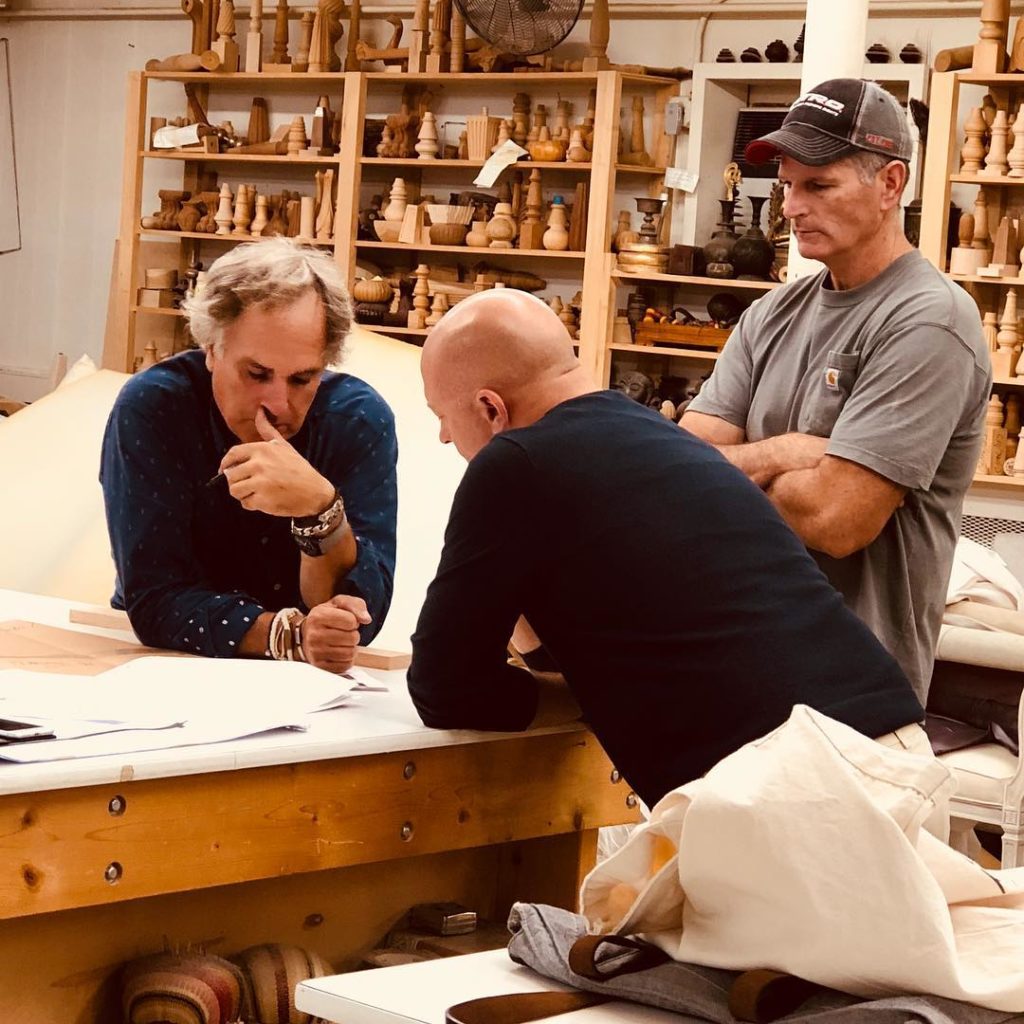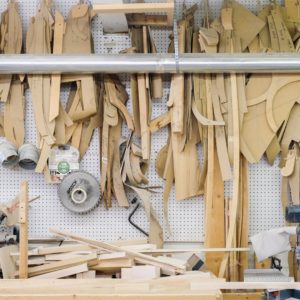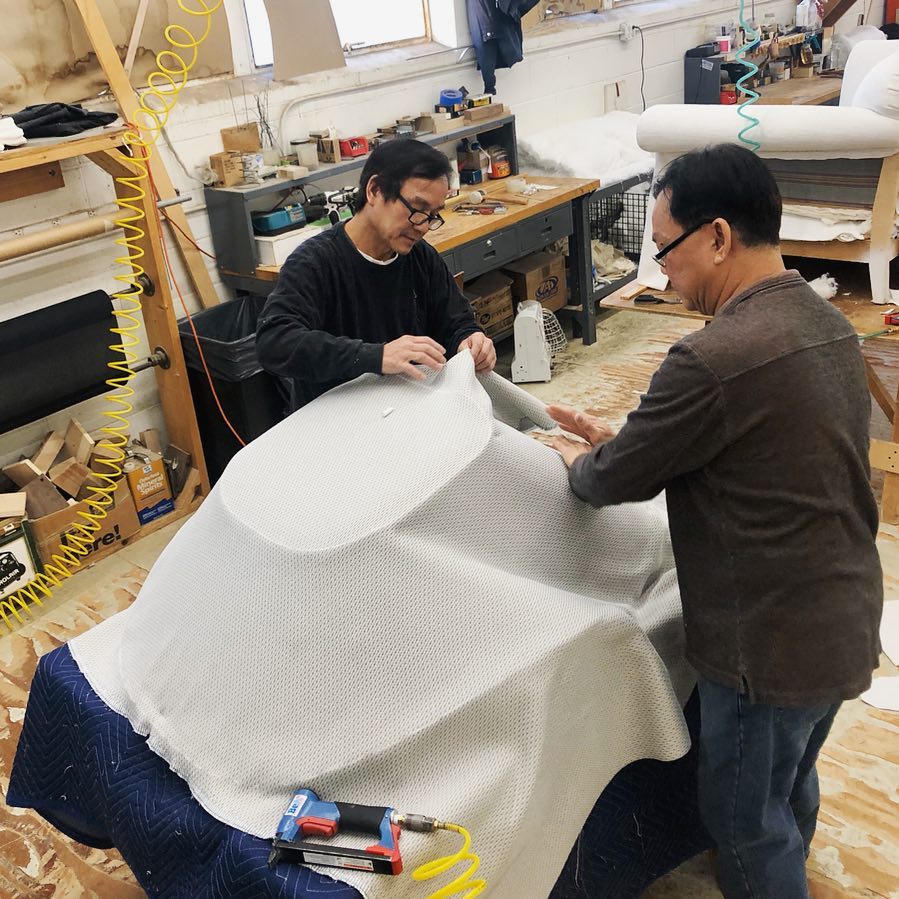Forget off-the-shelf furniture: Here’s why quality materials and craftsmanship matter
Categories: Furniture

There are those who say that the crafting of custom, made-to-measure, fine furniture is a dying art. We’re pleased to say that at McLaughlin Upholstering, it is a tradition that is thriving. Our team of award-winning artisans is committed not just to preserving this time-honored practice, but to finding ways to enhance it. We see the term “New England quality” as both a descriptor and an obligation to continue the legacy of the skilled craftspeople who came before us.
Quality furniture is more than an on-trend aesthetics and designer brand recognition. Instead, it starts with flawless workmanship and quality materials. In this guide, we’ll show you our process and what to look for in quality furniture.
A Proven 6-Step Process for Building the Highest-Quality Fine Furniture
The key to producing the most beautiful, luxurious and enduring pieces of upholstered fine furniture is having highly skilled artisans work within a proven process. At McLaughlin, we have fine-tuned our approach over the course of more than 130 years. Today it involves six steps:
- Consultation
- Design
- Framing
- Assembly
- Upholstering
- Finishing
Consultation

In consultations at our Boston showroom or over the phone, we collaborate with clients to come up with a vision for the finished piece. Inspiration can come from something as simple as a sketch the client has made or from a more specific source like a photograph or a page from a home decor magazine. We also have a historical archive of more than 25,000 patterns from which clients can choose.
Whether you are a professional designer or just have an eye for quality, our consultation process gives you a roadmap to the ideal custom furniture piece.
Design
Unlike furniture made for the masses, in the design phase, we customize everything about the piece to the client’s wants and needs. From the look of finials to proportions based on the client’s height to fabrics that perfectly match their decor, each detail is taken into account to produce an experience of extraordinary comfort and beauty.
The design process assures that the furniture we craft for you matches your exact specifications. We intend every piece to fit seamlessly into the spaces you have created.
Framing

We frame our fine furniture using solid, kiln-dried hardwood. Maple is known for its aesthetic appeal and durability, but our expert framer will work with whatever wood a client prefers. Every joint is hand-cut, glued, double-dowelled and corner-blocked to deliver outstanding strength and balance.
Assembly
In the assembly step, our artisans hand-stitch every component, including cushions and pillows. The result is a fully tailored fit that has a look and feel no manufactured furniture can ever achieve.
Upholstering

Upholstering is an art form that has been mastered for three generations by our skilled craftspeople. Their meticulous workmanship takes time — 10-12 weeks on average — but the end result is worth the effort.
Finishing
Our fabric cutters and head seamstress work closely to finish each piece, ensuring that the fabrics are stitched with eye-pleasing symmetry. No work of art leaves our Boston workroom until every detail has been reviewed and approved by artisans with the most discerning eye and unwavering standards.
Choose High-Quality Furniture Materials
The best furniture begins with great materials you won’t find ready-to-assemble.In order to produce exceptional fine furniture, we use only exceptional materials. Our commitment to incorporating the best components in our designs is one of the reasons that the pieces we produce are destined to be cherished by the families, businesses, and organizations that commission them for generations to come.
Some of the superior-quality materials we use include:
- Maple hardwood. For strength and beauty, it is hard to beat maple. Our expert framer will frame your piece with other wood if you prefer, but he will not work with “engineered” wood products. We proudly apply the label “solid hardwood” to our furniture.
- Jute webbing. Jute is a vegetable fiber that is spun into strong bands that can be stretched over a frame to form the webbing for the back and seat. That structural framework, combined with coil springs, delivers the ultimate in support and comfort. We never use synthetic jute substitutes.
- Horsehair and natural cotton. We source the finest horsehair to create the padding for our furniture because while manmade foam padding rapidly degrades, horsehair can provide centuries of service. Similarly, we incorporate only the purest natural cotton in our designs.
- Natural burlap. Burlap is a strong, versatile, breathable textile made from jute or sisal fiber. We use the best burlap to ensure maximum durability in our furniture.
- Latex rubber foam. Collected from the rubber tree, natural latex is turned into the high-quality finished foam product we use in our furniture.
- 100% white goose down. Admired for its unrivaled softness, goose down is the traditional choice for heirloom-quality furniture. When we incorporate this material, only the finest white goose down makes the cut.
Why do we insist on using the best materials, when lesser-quality substitutes cost less? The answer is in words you see in the descriptions above — “beauty,” “strength” and “durability.” We want our clients and generations to come to enjoy the gorgeous look of their furniture every time they walk into the room and the incredible feel whenever they use it. And, frankly, we want to earn the respect and the trust of people who appreciate the value of highly tailored, crafted, wonderfully functional works of art.
How to Look Out For Quality Furniture
There are, of course, no restrictions on the use of terms like “high-quality” and “fine furniture.” Unfortunately, that means they can be applied by any manufacturer to any item, including furniture that isn’t made to last. How can you know that a piece you are considering purchasing was built with the best materials and will retain the aesthetic and functional characteristics that attracted you to it for years to come?
Here are some questions to ask:
- Is it solid hardwood? Items produced with any of the many forms of “engineered” wood (particle board, wood veneers, etc.) may have a pleasing appearance initially, but they won’t last long.
- What type of wood is it made from? Manufacturers looking to create “affordable” furniture will often use lower-cost (which typically translates to lower-quality) woods including names you may not have heard of like rubberwood or mango wood.
- What are the upholstery and internal padding made from? Natural materials will generally provide many decades (or longer) of use and enjoyment. Man-made substitutes typically will not endure.
- How is the brand reviewed by people who have purchased it? Product reviews must certainly be taken with a grain of salt. But, if you see multiple references to flaws, damage from normal use and the like, you can be sure that inferior materials were used.
- Is it handmade? While this question doesn’t specifically address the materials used, robotic manufacturing processes will never replace the skill, care, and attention to detail of a master artisan.
Ultimately, the furniture that delivers the most joy and the most value is furniture crafted by talented artisans following time-honored processes and using the best building blocks. If you have questions about our approach to furniture making or want to talk about an idea you have for creating the perfect piece for your collection, please contact us at your convenience.











